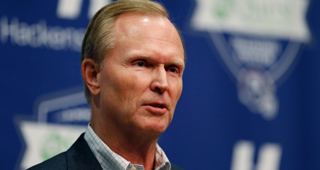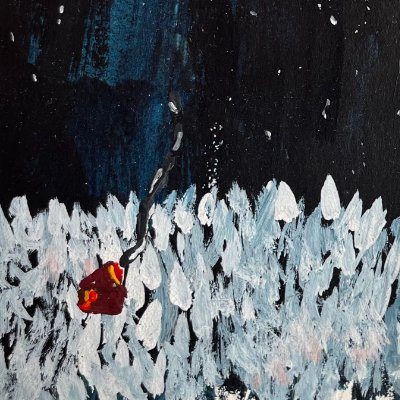The Tom Coughlin era had to end at some point or another, though for a while it looked like the 69-year-old might die on the job like a Supreme Court justice. When a head coach and franchise “part ways,” that’s usually a euphemism for a firing, a way for the newly unemployed fellow to save face, but Coughlin and his bosses in the New York Giants’ front office seemed to come to a mutual understanding that, after four consecutive playoff-less seasons, it was time for both parties to move on. Coughlin’s farewell press conference was sweet and dignified; owner John Mara spoke about him with a genuine fondness as he exited. The Giants held on to Coughlin until they couldn’t possibly justify doing so anymore, because they believed in him.
There’s something to be said for this approach. The self-thwarting paradox central to most sports franchises is that they try to emulate their league’s crème de la crème—your New England Patriots, your San Antonio Spurs, your St. Louis Cardinals—while lacking the requisite patience to run like any of those great organizations do.
The Patriots’ success depends upon some unreplicable factors—Bill Belichick and Tom Brady are singular talents—but one of the things that has helped the Pats over the years is a certain deliberateness. Owner Robert Kraft doesn’t make decisions hastily. He hires people who impress him and then trusts them abidingly, even, on occasion, when they screw up. He understands that you tend to get more out of people when you empower them as opposed to making them feel as if their next mistake could cost them their job, and that constant chopping and changing whips an organization into a state of frenzy that’s difficult to calm.
It’s hard to argue with the results the Giants got by sticking with Coughlin even through some lean periods, when the New York media was doing its howling worst to get the guy fired. Any franchise would be happy with two Super Bowls over 12 years, but those titles paper over a lot of deficiencies. Coughlin leaves the team having accumulated a .531 winning percentage and having missed the playoffs seven times. The Giants were rarely dominant under Coughlin, and they were prone to go on mysterious losing streaks in the middle of seasons. They no-showed against crummy opponents with regularity; they picked up a lot of dumb penalties despite Coughlin’s reputation as a disciplinarian. For all of the supposed stability Coughlin provided, the Giants were remarkably unstable under his supervision. The only thing they were all the time was streaky.
Two offseasons ago, the Giants offloaded maligned offensive coordinator Kevin Gilbride, dubbed “Killdrive” by his numerous detractors because the creativity of the modern fan knows no bounds, and also because, well, it was sort of true. Gilbride presided over some fine offenses as well as some lousy ones during his six years as Giants' playcaller, but what remained steady was the team’s underwhelming red zone performance, which ranged from middling (11th in touchdown rate in 2010) to downright awful (30th in 2013). Gilbride’s penchant for unsuccessful screens and draws on third-and-longs didn’t endear him to the fanbase either. But the Giants kept the unspectacular coach around until 2013, when the offense bottomed out completely.
The same brand of loyalty has been granted to general manager Jerry Reese, who has assembled some severely undermanned squads over the past few seasons, especially along the defensive line and in the secondary. Reese isn’t obviously bad at his job, but he does have obvious flaws: he tends to draft players with injury issues and sign veterans when they’re at their most expensive. If he were dealing with nearly any other organization, he would have been dismissed already, but the Giants are giving him one more year to turn the team around.
All of this has been much to the aggravation of New Yorkers and New Jerseyites. The Giants, for better and for worse, move slowly. They don’t do overhauls. This has its merits. For instance, a less assured franchise might have dumped Eli Manning when he struggled early in his career, not allowing him to develop into the quite good quarterback he has become. And on a purely ideological level, there’s bravery in standing still in the frenetic NFL, where player turnover is high and coaches’ seats warm rapidly. If John Mara were to explain why he and the Tisch family run the Giants the way they do, he might mention that he wants to know what he has in a running back or a front office executive or a coordinator before he sends the poor guy packing, and then he’d point to his trophy case.
The problem with the Giants is they seem to see what they have a year or two later than everyone else does. That, or they understand the shortcomings of the folks they employ and make peace with them. It’s an approach that aims to create stability, which is a worthy goal, but the Giants prize this stability as if it were inherently good, forgetting that persistent mediocrity is a kind of stability, too. Categorically refusing to make drastic changes is every bit as daft as making too many, too quickly. This stubbornness is what has sunk the Giants in recent years. Considering that they have only just now let Tom Coughlin go, and aren’t sending anyone else out the door behind him, it doesn’t appear the franchise will be getting more flexible anytime soon.



